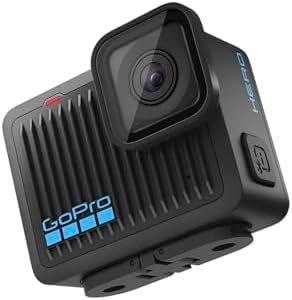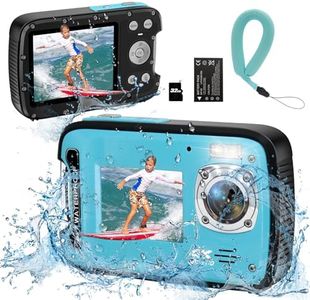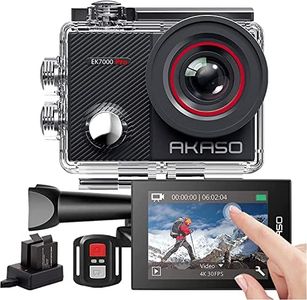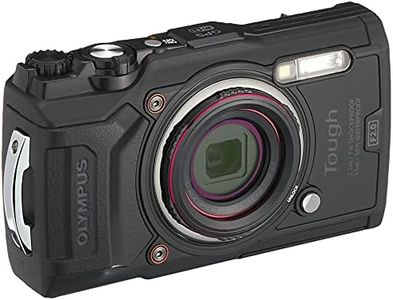We Use CookiesWe use cookies to enhance the security, performance,
functionality and for analytical and promotional activities. By continuing to browse this site you
are agreeing to our privacy policy
10 Best Scuba Camera
From leading brands and best sellers available on the web.#1
Winner
Buying Guide for the Best Scuba Camera
Choosing the right camera for scuba diving is essential to capture high-quality photos and memories underwater. The underwater environment presents unique challenges such as low light, strong colors, and pressure, so your camera needs specific features to handle these conditions effectively. Focus on what you want to do with your camera: are you looking to record casual snorkel adventures or diving deep for professional-level photography? Understanding your primary use case will help you narrow down the best fit.Waterproof Depth RatingThe depth rating shows how deep you can take the camera underwater without damaging it. Different cameras are rated for different maximum depths, typically ranging from 10 meters for basic waterproof cameras up to 60 meters or more for advanced models. If you're snorkeling or shallow diving, a lower depth rating is fine. For deep dives, ensure your camera exceeds the maximum depth you plan to reach, considering some safety margin.
Image Sensor SizeThe sensor size affects how much light the camera captures, which is crucial underwater where it's often dim. Common sensor sizes range from small (1/2.3 inch, typical in compact cameras) to larger (like 1 inch or more in advanced cameras). Larger sensors give better image quality, especially in low light, but often make the camera bigger and pricier. If you want professional-quality images, look for a larger sensor. For casual snapshots, a smaller sensor is usually enough.
Lens OptionsSome cameras have a built-in fixed lens, while others use interchangeable lenses. Fixed lenses are simple and reliable, ideal for beginners or those who want hassle-free shooting. Interchangeable lens systems offer more flexibility, allowing you to use special lenses for wide-angle or macro shots. Think about the kind of photos you want to take—if you want to experiment or get creative, go for a system with lens options. If you just need something easy, stick with a built-in lens.
Controls and Usability UnderwaterUnderwater, wearing gloves or dealing with currents can make small buttons or complicated menus hard to use. Cameras with large, easy-to-press buttons and straightforward controls are much easier to handle when diving. If you plan to use the camera often or in challenging conditions, test how the controls feel to you before buying, or check user reviews focused on underwater operation.
Video CapabilitiesMany divers like to record videos as well as take photos. Camera video specs are usually described in terms of resolution (like Full HD or 4K) and frame rate (such as 30fps or 60fps). Higher resolution and faster frame rates give smoother, more detailed videos but produce larger files. If video is your priority, pay attention to these specs. For social media sharing or personal memories, standard HD is often enough. For vivid, professional-grade footage, 4K at a high frame rate is the way to go.
Lighting SupportUnderwater photos and videos usually need extra light. Some cameras or their housings have built-in lights, while others let you attach external strobes or video lights. If you’re diving in clear, shallow water, built-in flash or ambient light may suffice. For deeper or more colorful photography, look for a camera with good options for adding or syncing external lighting equipment.
Housing Compatibility and DurabilityEven waterproof cameras often benefit from a specialized housing, especially for deeper dives or extra protection. Good housings add safety from leaks, let you reach more controls, and support accessories. Make sure your camera has robust, well-reviewed housing options that match your diving habits. If you plan rough dives or travel a lot, sturdy construction and reliable sealing are crucial.
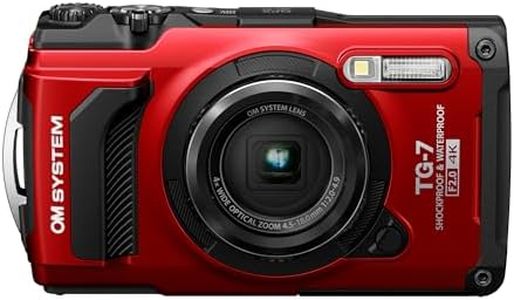
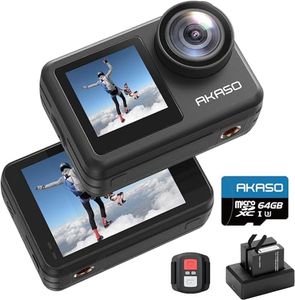
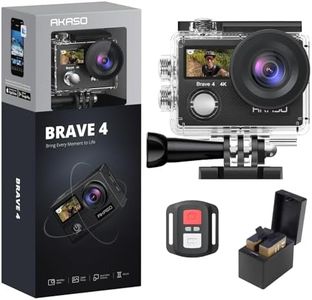


![SeaFrogs Tough TG7 [60m/195ft] Professional Underwater Camera Scuba Case Waterproof Diving Housing for Om System tg7 Tough TG-7 tg7, w/Inbuilt Leak Detection Sensor, Vacuum Pump Interface - Black](https://images-proxy.bestreviews.guide/hguoTYvKqoojeh9H8yTymstF-TU=/0x300/https://m.media-amazon.com/images/I/415owMaabhL._AC_CX679_.jpg)
